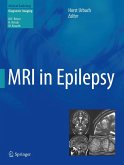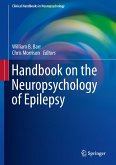Epileptogenic lesions are often small and do not change over time. Moreover, several genetically determined epilepsy syndromes exist, and by definition are not caused by underlying structural lesions. As a result of these circumstances, there is frequently a degree of uncertainty over whether an epileptogenic lesion is being overlooked or simply is not present. MRI can play an important role in resolving such uncertainty and localizing epileptogenic foci.
This book aims to provide the clinical and imaging information required in order to decide whether an MRI scan is appropriate and whether it is likely to be sufficient to detect a lesion. The first part of the book presents background information on epilepsy and explains how to perform an MRI examination. Detailed attention is paid to functional MRI and post-processing, and the examination of subcategories of patients is also discussed. The second part of the book then documents the MRI findings obtained in the full range of epileptogenic lesions with the aid of high-quality images. Throughout, emphasis is placed on guiding the reader in the correct interpretation of the imaging findings. Both radiologists and referring physicians will find this book to be an indispensable guide to the optimal use of MRI in epilepsy.
Hinweis: Dieser Artikel kann nur an eine deutsche Lieferadresse ausgeliefert werden.
This book aims to provide the clinical and imaging information required in order to decide whether an MRI scan is appropriate and whether it is likely to be sufficient to detect a lesion. The first part of the book presents background information on epilepsy and explains how to perform an MRI examination. Detailed attention is paid to functional MRI and post-processing, and the examination of subcategories of patients is also discussed. The second part of the book then documents the MRI findings obtained in the full range of epileptogenic lesions with the aid of high-quality images. Throughout, emphasis is placed on guiding the reader in the correct interpretation of the imaging findings. Both radiologists and referring physicians will find this book to be an indispensable guide to the optimal use of MRI in epilepsy.
Hinweis: Dieser Artikel kann nur an eine deutsche Lieferadresse ausgeliefert werden.
From the reviews:
"This multi-author monograph from the reputable publishing house Springer is a timely contribution to this field. ... The chapters are well referenced for those who want further details. The book is an excellent scholarly contribution to the field of epilepsy imaging and will serve as a useful reference to be dipped in and out of by all who encounter these investigations in their clinical practice." -- Arpan K. Banerjee, RAD Magazine, January, 2014
"This multi-author monograph from the reputable publishing house Springer is a timely contribution to this field. ... The chapters are well referenced for those who want further details. The book is an excellent scholarly contribution to the field of epilepsy imaging and will serve as a useful reference to be dipped in and out of by all who encounter these investigations in their clinical practice." -- Arpan K. Banerjee, RAD Magazine, January, 2014
"This is an excellent MR atlas of acquired, metabolic, MELAS, congenital, pediatric, parasitic, infectious (bacterial & viral) AIDS, and tumorous lesions affecting cerebral cortical, white matter, and brainstem function. ... I recommend this book to neurosurgeons, neuropathologists, neurologists, and researchers. Pediatic surgeons will also find the text/atlas helpful. It is very detailed with a large number of MR images in a case study format." (Joseph J. Grenier, Amazon.com, July, 2015)
"This book is very well organized and very easy to read. ... The editor of MRI in Epilepsy has put together a comprehensive list of epileptogenic lesions, with information on how to image them and how to correlate them with the clinical picture. ... this book is a practical guide to help us better image these lesions and be more sensitive to them, so as to provide better services to our patients with epilepsy." (Earn Chun Christabel Lee, Radiology, Vol. 272 (2), August, 2014)
"This multi-author monograph from the reputable publishing house Springer is a timely contribution to this field. ... The chapters are well referenced for those who want further details. The book is an excellent scholarly contribution to the field of epilepsy imaging and will serve as a useful reference to be dipped in and out of by all who encounter these investigations in their clinical practice." (Arpan K. Banerjee, RAD Magazine, January, 2014)
"This book is very well organized and very easy to read. ... The editor of MRI in Epilepsy has put together a comprehensive list of epileptogenic lesions, with information on how to image them and how to correlate them with the clinical picture. ... this book is a practical guide to help us better image these lesions and be more sensitive to them, so as to provide better services to our patients with epilepsy." (Earn Chun Christabel Lee, Radiology, Vol. 272 (2), August, 2014)
"This multi-author monograph from the reputable publishing house Springer is a timely contribution to this field. ... The chapters are well referenced for those who want further details. The book is an excellent scholarly contribution to the field of epilepsy imaging and will serve as a useful reference to be dipped in and out of by all who encounter these investigations in their clinical practice." (Arpan K. Banerjee, RAD Magazine, January, 2014)








